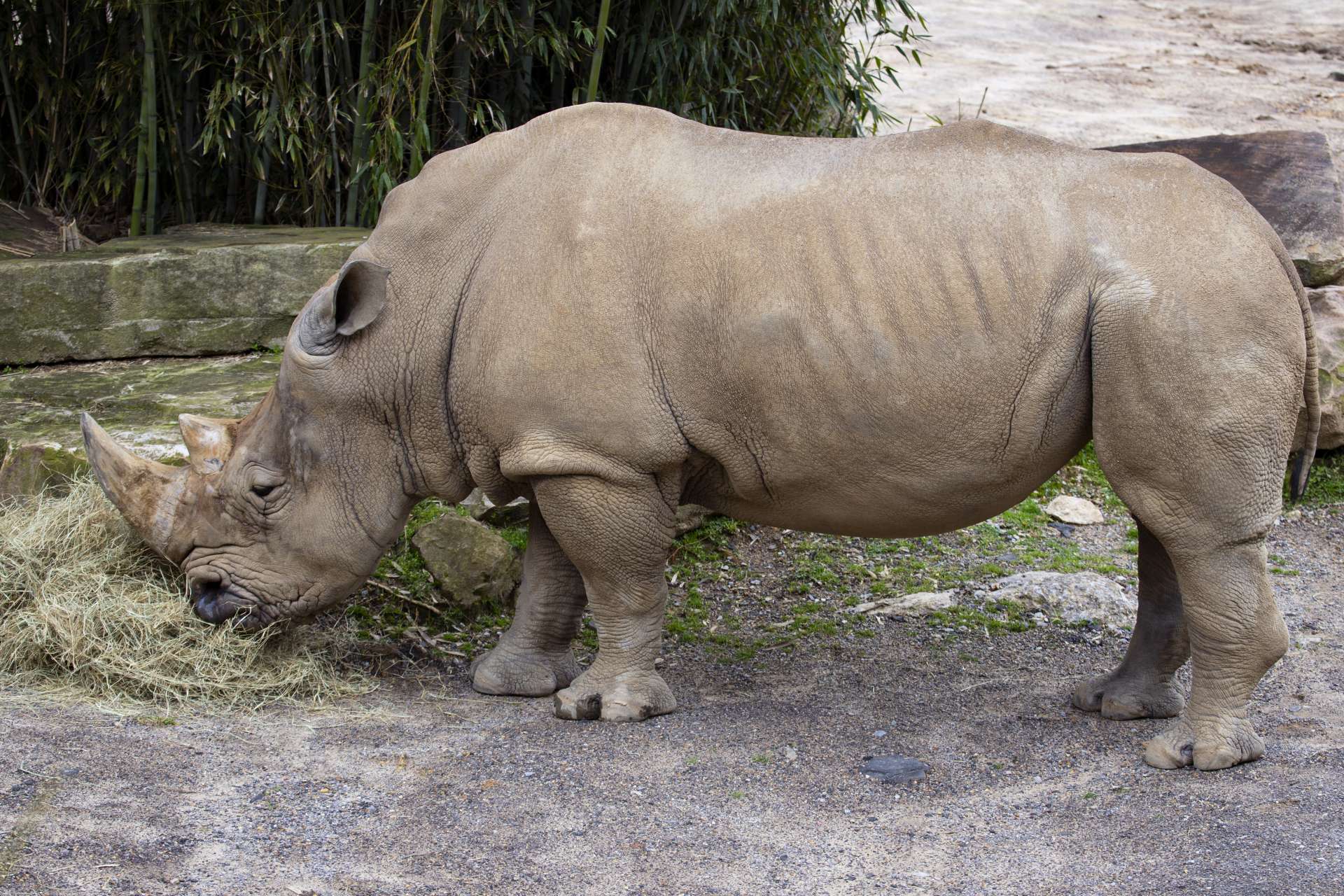Read More
White rhinos are one of five species of rhinoceros; southern white rhinos are one of two white rhino subspecies and are native to middle and South Africa. White rhinos are the largest of the rhinos.
The southern white rhino is among the most recognizable of all of Africa’s large mammals, standing up to 6 feet tall at the shoulder and weighing up to 6,000 pounds. White rhinos are distinguished from black rhinos by their size and by the shape of their upper lip. The “white” aspect of the name comes from an African word meaning “wide.”
White rhinos use their broad, square upper lips to graze on savanna grasses, while black rhinos use their pointed upper lips to browse on leaves from trees and shrubs. White rhinos can also be distinguished from black rhinos by their longer skulls, less sharply-defined foreheads, and more pronounced shoulder humps. Both black and white rhinos have two horns. The front horn is longer and averages 35 inches in length, but may grow as long as 60 inches.
White rhinos are considered the most social of all the rhinos. Offspring usually stay with their mothers until the next calf is born. Larger, temporary groups of 14 or more individuals are often seen, usually made up of immature individuals or mothers without calves. Dominant males are typically solitary and occupy smaller ranges than females do.
Territories are often marked by spraying urine, spreading dung, foot-dragging and horn-scraping. While dominant males will tolerate females and sub-adult males in their territory, invading bulls will be challenged. Actual fights are rare, however, and confrontations usually consist of horn-butting, false charges and other displays.
Breeding occurs year-round, with courtship and mating periods lasting one to three weeks. Gestation is approximately 16 months. Rhinos give birth to a single calf, and calves are usually weaned when they are 1 to 2 years old. The usual interval between births is two to three years. Females usually begin to breed at 6 years old; males, at 10 to 12 years old. Rhinos can live 40 to 50 years.
There are two geographically separated subspecies of white rhino: the northern white rhino and the southern white rhino. The northern white rhino is now the rarest of all rhinos, with only two female individuals remaining in Ol Pejeta Conservancy in Kenya. The southern white rhino is the most numerous of all the rhinos, with a majority of the population focused in South Africa.
Southern white rhinos are found in grassland savanna areas in middle Africa and more prevalently in southern Africa.
White rhinos are known for their flat, wide upper lips. These are integral parts of their feeding adaptations, since they enable the animals to graze on short grasses. These flat lips allow the rhinos to get low to the ground and consume the grasses with ease. Because of this ability, white rhinos are pure grazers in the wild.
In zoological settings, southern white rhinos usually eat grass hay, hay pellets and pelleted grain formulated for herbivores.
The northern subspecies of white rhino only has two individuals remaining today, making their population functionally extinct. The southern white rhino, however, is considered a conservation success story. Considered extinct for much of the late 19th century, a small population was discovered in southern Africa in 1895. A century of conservation efforts followed, and there are now an estimated 20,000 individuals in the wild today.
Read Less
